Video: 7 pre-season checks every sprayer should have
Spring is just around the corner and farmers up and down the land are drawing up battle plans about how best to tackle the impending mountain of work.
With many growers’ spring cropping area bigger than ever thanks to blackgrass control measures, it gets more difficult each year to tackle spring work in a timely manner.
That’s why Farmers Weekly went to visit Farmer Focus writer and keen sprayer operator Matt Redman to get the lowdown on how to minimise the risk of downtime just as the wind drops and the sun comes out.
See also: Video: How to properly set up a crop sprayer
Watch the video with Matt demonstrating each of the points on his machinery here:
Whether your sprayer is big or small, old or new, trailed or self-propelled, having a quick check of these now could save the air turning blue in a few weeks’ time.
Hitching and steering points
Before tackling the spraying components it’s good to get back to basics and inspect the mechanical fixtures and fittings.
On a trailed sprayer, this starts with the hitching point, and both the ball hitch and the coupling need to be free of wear.
Where a PTO shaft provides power, the shaft needs to be fitting together correctly and the guard should be complete.
The suspension bushes are another highly stressed component subject to wear, so these should be inspected along with the wheel nuts.
On a self-propelled sprayer, give the undercarriage the once over, again checking pins and bushes as well as hydraulic pipework.
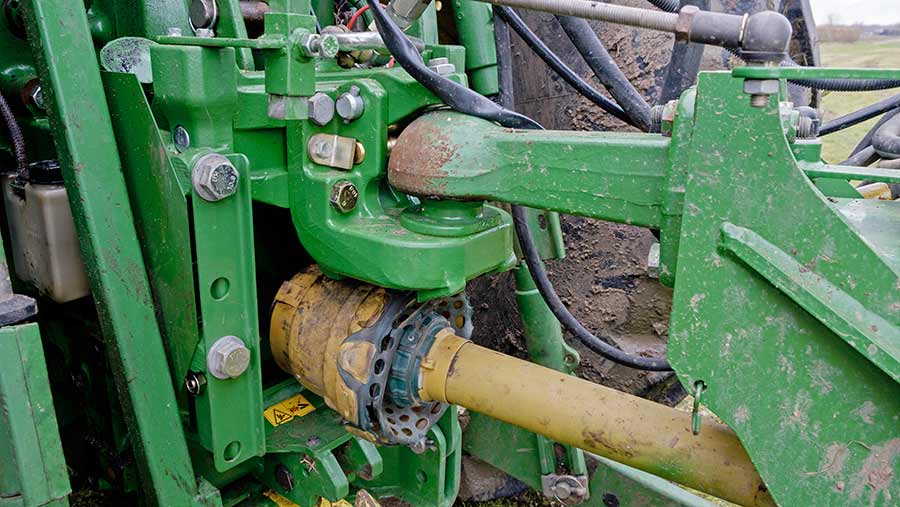
Hitching a sprayer © Jason Bye
Tyre pressures and lights
The correct tyre pressures on a tractor (if present) and sprayer will make a massive contribution to its stability and performance, so getting these optimised is a must.
This will vary depending on whether you do a lot of road work (higher pressure needed) or are predominantly moving from field-to-field without touching tarmac.
If you are unsure, consult a handbook or speak to the tyre manufacturer, ensuring you take the fully laden weight into account.
Road users will also need to make sure that all lights are working correctly to comply with the law, and fully-functioning work lights are essential to allow safe operation in darkness.

Checking tyre pressure on a sprayer © Jason Bye
Pump
This is obviously one of the most important components and should be examined carefully after winter for frost damage.
As well as obvious signs of a problem, such as cracks and leaks (when running at operating pressure), check that there is oil present in the top and it’s the correct colour.
Have a glance at the pressure gauge to ensure it’s still reading zero when not in use as well.
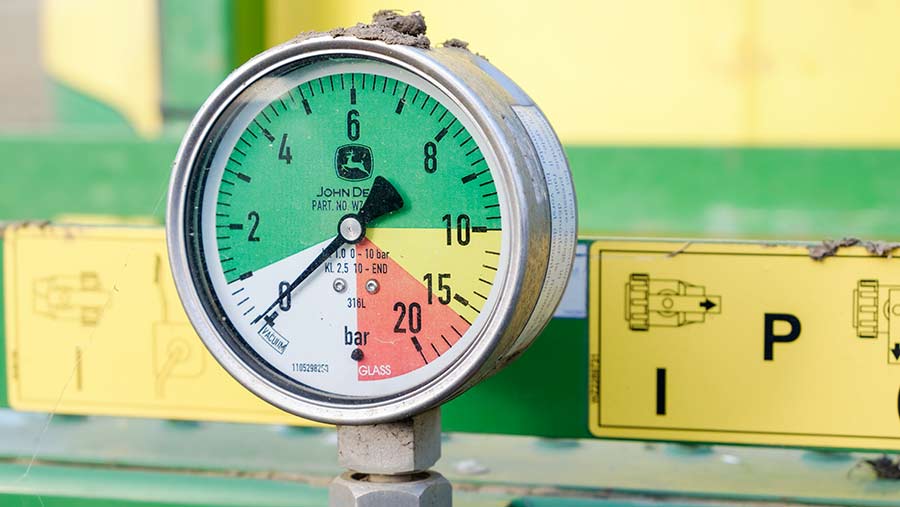
Pressure gauge on a sprayer © Jason Bye
Pipelines
All pipework, including both spray and air lines will need a careful inspection at operating pressure after flushing out winter antifreeze to check that pipework is complete and has not degraded over winter.
The National Sprayer Testing Scheme (NSTS) will run machines at 5 bar as part of its test. Check all couplings are tight and anti-drip valves are working correctly as well.
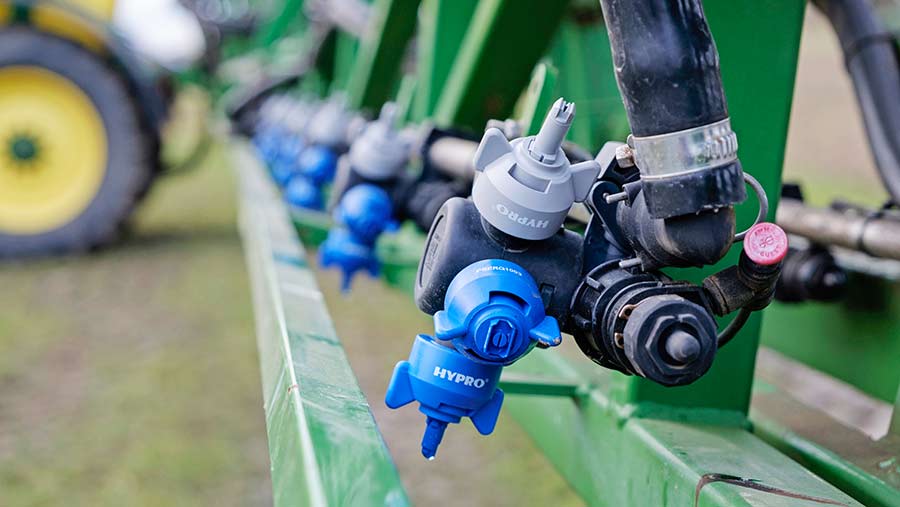
Pipework on a sprayer © Jason Bye
Nozzles
From the humblest flat fan to the fanciest 3D, it’s vital that all nozzles are jug tested frequently to check they are giving the correct output at the correct operating pressure.
It’s a good tip to keep a record of when nozzles were changed so that the number of hours of service they have given can be tracked. This can help operators decide whether to change one nozzle or a full set.
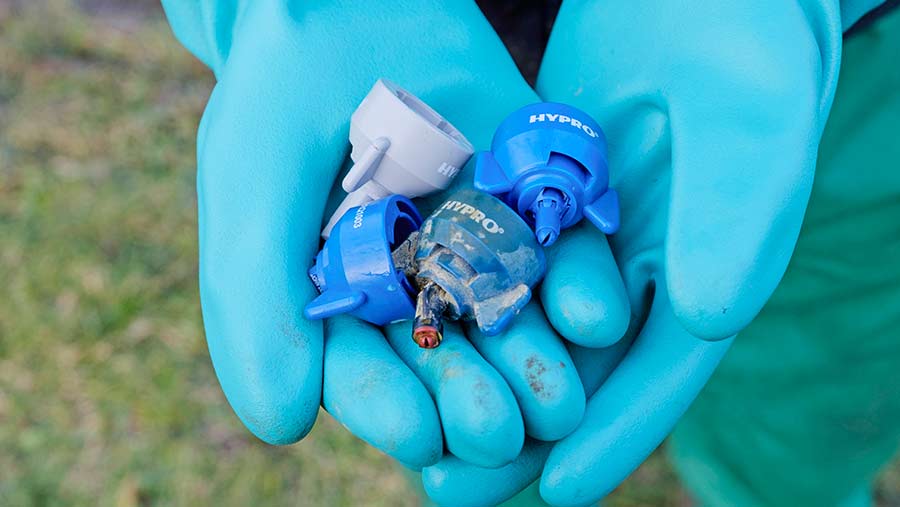
Checking sprayer nozzles © Jason Bye
Boom stability
It’s not much use delivering the spray to the nozzles if they’re not the correct distance from the ground as often as possible.
Stand at the end of the boom and give it a heave towards the floor and see if it correctly levels itself. If it fails to do so this is likely to be a sign that wear pads in the centre need replacing or there are springs that need adjusting.
It’s also a good idea to check all the pivot points along the boom are greased up well, the pins are in good condition and there are no cracks in the metalwork.
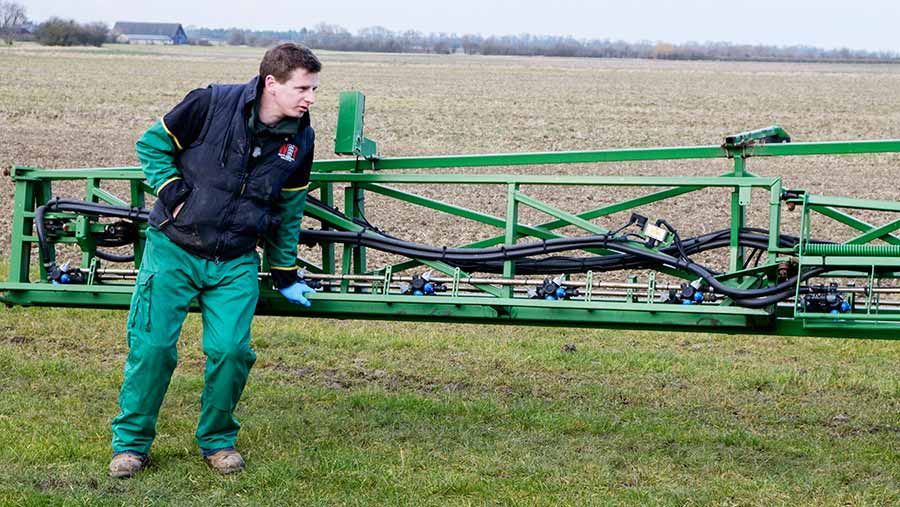
Matt Redman checks a sprayer boom © Jason Bye
Are you within the law?
It’s a legal requirement for your sprayer to have an up-to-date NSTS certificate, so now is a good time to dig out the certificate and check the expiry date to avoid it running out in the middle of the busy season.
Make sure that all the required personal protective equipment is available for you and your staff, including disposable overalls, wellies, and nitrile gloves.
Have a dig around in the on-board first aid kit as well to check that the contents, including eyewash, are complete and within date.

Check the first aid kit is complete and in date © Jason Bye

